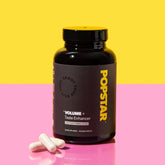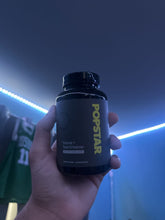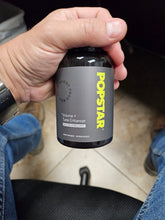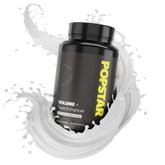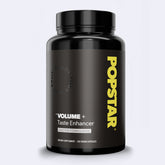P-5-P, also known as pyridoxal 5 phosphate, is the active coenzyme form of vitamin B6 that the body can immediately use for metabolic, neurological, and hormonal processes. As an active vitamin B6 supplement, P-5-P is often taken by individuals who want more efficient absorption or who may have difficulty converting regular vitamin B6 into its usable form.
Table of Contents
- What Is P-5-P Vitamin B6?
- Quick Facts About P-5-P
- How P-5-P Works in the Body
- P-5-P Benefits for Men
- P-5-P vs Vitamin B6
- Common Uses of P-5-P Supplements
- Potential Risks and Side Effects
- Recommended P-5-P Dosage
- Interactions and Precautions
- Frequently Asked Questions
- References and Further Reading
What Is P-5-P Vitamin B6?
P-5-P vitamin B6 refers to pyridoxal 5 phosphate, the active coenzyme form of vitamin B6 required for more than 100 enzymatic reactions throughout the body. While many over-the-counter vitamin B6 supplements contain pyridoxine HCl, P-5-P bypasses the liver’s conversion steps and is immediately biologically active.
This is particularly relevant for individuals with genetic variations, digestive issues, or metabolic limitations that affect B6 utilization. For many men, taking an active vitamin B6 supplement supports energy metabolism, hormone regulation, cognitive function, and nervous system health.
Key Takeaways
- P-5-P is the active, coenzyme form of vitamin B6 that your body uses directly.
- It supports neurotransmitter production, energy metabolism, and hormone regulation.
- P-5-P supplements may benefit people who struggle to convert standard B6 into its active form.
- For men, P-5-P may support stress management, sleep, mood, and metabolic health.
- The supplement is not a replacement for medical treatment but may support overall wellness.
Quick Facts About P-5-P
| Category | Details |
|---|---|
| Name | Pyridoxal 5 Phosphate (P-5-P) |
| Type | Active vitamin B6, coenzyme form |
| Common Uses | Mood support, metabolism, nerve health, hormone balance |
| Suitable For | Adults seeking improved B6 absorption or metabolic support |
| Not Suitable For | Individuals with B6 hypersensitivity or without medical guidance if on certain medications |
| Form | Capsules, tablets, combined B-complex formulas |
| Conversion Needed | None; already active |
How P-5-P Works in the Body
P-5-P serves as a cofactor in numerous biochemical reactions. It supports the production of neurotransmitters such as dopamine, serotonin, and GABA. It also plays a role in hemoglobin synthesis, amino acid metabolism, and glucose regulation.
Because P-5-P is active upon ingestion, it may provide steadier or more predictable effects for individuals with reduced conversion efficiency.
P-5-P Benefits for Men
Men may experience unique advantages from sufficient active vitamin B6 intake. While research varies, many findings suggest P-5-P supports several key areas of men's health:
Metabolic Health
- Helps convert food into usable energy.
- Supports healthy glucose metabolism.
Cognitive and Mood Support
- Helps regulate neurotransmitter synthesis.
- May support better stress resilience.
Hormonal Balance
- Supports pathways involved in testosterone and cortisol balance.
Nervous System Support
- Plays a role in nerve function and neuromuscular signals.
P-5-P vs Vitamin B6
The primary distinction is that P-5-P is already active. Regular vitamin B6 (often pyridoxine HCl) must be converted into P-5-P by the liver.
Differences Table
| Feature | P-5-P | Vitamin B6 (Pyridoxine) |
|---|---|---|
| Activity | Active coenzyme | Requires conversion |
| Absorption | Potentially more efficient | Variable |
| Suitability | Helpful for those with conversion issues | Suitable for general supplementation |
| Cost | Higher | Lower |
Common Uses of P-5-P Supplements
People typically take P-5-P supplements for:
- Mood and stress regulation
- Nervous system support
- Energy and metabolism
- Sleep quality
- Hormone and adrenal balance
- Supporting methylation or detox pathways
Potential Risks and Side Effects
P-5-P is generally safe when taken in recommended doses, but excessive vitamin B6 intake can cause nerve-related symptoms.
Possible Side Effects
- Tingling or numbness in extremities
- Digestive discomfort
- Headaches
Risk vs. Safety Table
| Potential Risk | How to Reduce Risk |
|---|---|
| High-dose neuropathy | Stay within recommended dosage |
| Medication interactions | Consult a healthcare provider |
| Digestive upset | Take with food |
Recommended P-5-P Dosage
There is no universal dosage for P-5-P, but many supplements provide 10–50 mg per serving. Men should consider their overall dietary B6 intake, health goals, and potential interactions.
General guidelines suggest starting with the lowest effective dose, especially if combining with a B-complex.
Interactions and Precautions
P-5-P may interact with certain medications, including those affecting neurological function. Individuals with chronic conditions should check with a healthcare professional before starting any new vitamin B6 supplement.
Frequently Asked Questions
What is P-5-P used for?
P-5-P is used to support mood, metabolism, nerve function, and hormonal balance. Many people take it when they want a vitamin B6 supplement that is already active and easily utilized.
Is P-5-P better than regular vitamin B6?
P-5-P may be better for individuals with impaired conversion, though both forms can be effective. Some people find that P-5-P provides more consistent benefits.
Can men benefit from P-5-P?
Yes. P-5-P benefits for men include hormonal support, stress management, metabolic health, and improved cognitive function.
Does P-5-P help with energy?
Indirectly, P-5-P supports energy production by helping convert proteins and carbohydrates into usable fuel.
Can P-5-P improve sleep?
Because P-5-P influences neurotransmitter pathways involved in relaxation, some individuals report sleep improvements.
Is P-5-P safe to take daily?
In recommended doses, P-5-P is typically safe. Extremely high doses of vitamin B6 may cause nerve irritation, so moderation is important.
What is the best P-5-P dosage?
Dosage varies by individual, but many adults take 10–50 mg daily. A healthcare provider can help tailor a dose.
Does P-5-P support testosterone?
P-5-P contributes indirectly to hormonal regulation, including pathways that influence testosterone metabolism.
Can P-5-P cause side effects?
Possible side effects include tingling or digestive upset when taken at high doses.
Is P-5-P good for stress?
Yes. P-5-P is involved in synthesizing neurotransmitters that regulate stress responses.
Does P-5-P improve mood?
For some individuals, supporting neurotransmitter pathways may contribute to improved mood stability.
How is P-5-P different from pyridoxine?
Pyridoxine is inactive and must be converted, while P-5-P is the active form ready for use.
Should I take P-5-P with food?
Taking P-5-P with food may reduce digestive discomfort.
Can P-5-P be taken with other B vitamins?
Yes. Many B-complex formulas contain P-5-P.
When should I avoid P-5-P?
Avoid it if you have vitamin B6 hypersensitivity or potential medication interactions unless approved by a clinician.
Can P-5-P help with nerve health?
It supports biochemical pathways involved in nerve signaling.
What does active vitamin B6 mean?
Active vitamin B6 refers to P-5-P, the coenzyme form that the body can immediately use.
Is P-5-P good for metabolism?
Yes. It plays a key role in metabolic enzyme activity.
How long does P-5-P take to work?
Some individuals notice benefits within days, though this varies.
References and Further Reading
- Major national health organizations providing nutrition guidelines
- Educational material from recognized nutrition and dietetics associations
- Peer-reviewed articles on vitamin B6 metabolism
- Resources from established men’s health clinics
- Publications from reputable integrative medicine institutions
This article is for informational and educational purposes only and does not constitute medical advice.
